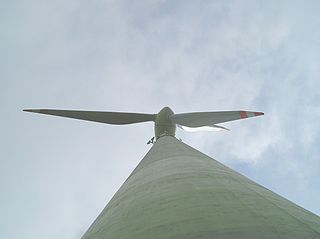From Guest Blogger Steve Waller: 5 Myths About Wind Farms
When it comes to renewable energy, there’s hardly a shortage of misinformation out there. That said, those with a skeptical streak really seem to have it in for wind farms. Here’s a look at some of the most widely propagated myths about wind energy, along with an explanation of why they’re simply not true.
Myth 1: Wind Power is Costly
Fact: The cost of producing wind energy compares favourably to the cost of producing nuclear and coal energy. Wind turbines, by their very nature, have no fuel-related costs whatsoever and help to make the production of electricity cheaper in general. Between the year 1990 and the year 2002, the capacity of global wind energy doubled after every 3 years and with every doubling, the cost of electricity fell by about 16%. As prices of scarce fossil fuels continue to increase, the price of wind energy continues to decrease and earlier this month German researchers Deutsche Welle concluded that when wider costs are factored in, at 9 cents per kWh, wind power is, along with solar, the cheapest source of electricity in the world.
Myth 2. Wind Energy does Not Reduce Carbon Emissions
Fact: Needless to say, wind power does not produce waste products or greenhouse gases such as carbon dioxide (CO2), methane (CH4), nitrous oxide (N2O), ozone (O3), or water vapour (H2O). These greenhouse gases are not only dangerous to the environment, but they also pose a great danger to human health. The biggest contributors to GHG emissions are power plants processing fossil fuels. These power plants produce over 150 million tonnes of greenhouse gases every year. A single modern wind turbine can save up to more than 3,000 tonnes of carbon emissions yearly. Indeed, after just 3-5 months in operation a turbine will offset all the emissions caused by its manufacture. From then on, for the rest of its twenty odd year lifespan, it’ll continue to lessen the impact of emissions caused elsewhere.
Myth 3. Wind Farms are an Eyesore
Fact: Over the past few years a great deal of research has been undertaken in order to find out what people really think about wind farms. Various studies have revealed that most people think that wind turbines add extra aesthetic value to the landscape. In the United Kingdom for instance, according to research by GfK NOP, about 85% of the adult population favours wind energy. Only about 8% of the population are against it, while the rest are unsure about their opinions. Researchers also indicate that most people who live near wind farms like the presence of wind turbines, and that more people would like wind farms to be constructed within their localities. Despite what the campaigns of interested parties might have you believe, for many, wind turbines are not only a source of power, but they are also a beautiful addition to the landscape.
Myth 4: Wind Farms are a Potential Danger to Human Beings
Fact: Unlike other sources of energy that emit dangerous gases to the air, wind energy is very clean and is not associated with any lung or breathing problems. However, there are those that argue the noise from turbines, or more specifically the ‘infrasound’ they generate, can effect human health. The truth is modern wind turbines are being designed with very low infrasound technology, allowing them to have very minimal noise levels and reducing the chance of them becoming a disturbance, let alone a threat. Indeed, you’ll experience higher levels of infrasound when within 75 meters of a beach due to the sound of the ocean. Needless to say, this hasn’t stopped people living by the sea.
Myth 5. Wind Farms are a Danger to Birds
Fact: In order for construction of a modern wind farm to be approved, it has to undergo environment impact assessment procedures. Through the procedures, the proposed construction site is monitored, and the population of different species of birds evaluated. The members of British Wind Energy Association (BWEA) follow the Best Practice Guidelines of the wind energy industry to the letter, and work usually work together with reputable organisations like the Royal Society for the Protection of Birds (RSPB) and the English Nature (EN) in order to make sure that the layout and design of a wind farm does not interfere with the habitat of birds or wildlife in any manner. Recent reports from concerned researchers reveal that climate change is the greatest threat to bird and wildlife populations. Sustainable energy will, in fact, be a huge help to many conservation projects.
Steve Waller is an environmental blogger on a mission to bring down the size of his carbon footprint. To read more of his thoughts and track his progress, visit GreenSteve.com.


“The biggest contributors to greenhouse gas emissions are the nuclear and coal power stations.”
Exactly how can nuclear plants contribute even as much CO2 as wind systems considering that for construction, wind systems require 8 times as much steel and 30 times as much concrete as our current nuclear power technology? And that doesn’t even consider the liquid fluoride thorium reactor (LFTR) which would require considerably less steel and concrete as our current nuclear technology.
Nuclear plants produce NO CO2 during operation. Even if we continue to use our present inefficient pressurized water thermal reactors using uranium as fuel, if the uranium refining uses nuclear power, that doesn’t emit CO2 either.
http://www.democraticunderground.com/discuss/duboard.php?az=view_all&address=115×271837